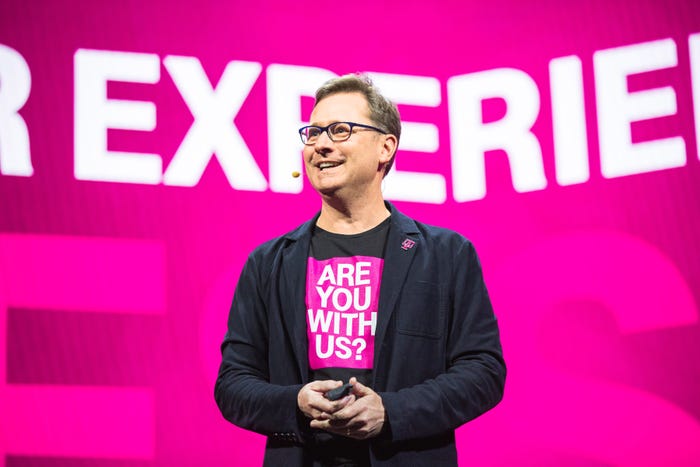Lynk Global inks deals with eight carriers, plans for global broadband coverage by 2025Lynk Global inks deals with eight carriers, plans for global broadband coverage by 2025
.jpg?width=1280&auto=webp&quality=95&format=jpg&disable=upscale)
Satellite-direct-to-phone company Lynk Global is signing a partnership agreement with a commercial wireless carrier on a monthly basis and plans to provide global broadband service by 2025, if it can secure adequate funding, according to Lynk CEO Charles Miller.
Lynk ultimately plans to have 5,000 low-earth-orbit (LEO) satellites acting as cell towers in space that will support broadband service that connects directly to unmodified cell phones, without the need for some sort of satellite dish to receive the signal, Miller said during a video interview with Light Reading, an Informa partner of IWCE’s Urgent Communications.
“Our objective is to get continuous real-time service—that means at least 1,000 of those 5,000 [satellites]—by 2025,” Miller said last week during the interview conducted at MWC 2022 in Barcelona.
“The biggest constraint on our schedule is raising the capital. So, we’re in talks with a lot of major investors right now and strategic investors. As long as we can hit those milestones of raising the capital, we will—in the next four or five years—have broadband everywhere, directly to your phone.”
When Lynk completes its planned constellation of satellite, the company’s broadband service will feature a high level of reliable connectivity, according to Miller.
“We’re going to have a lot of redundancy in orbit,” he said. “Our plan ultimately is that—over any part of the earth—if a satellite fails, we have about five other satellites as backup.
“But more importantly, we’re backup for planet Earth. When the hurricane hits—or the fires or the tornadoes or the tsunamis—when they hit and take out the terrestrial towers, we’re instant backup. Our whole focus is on saving lives and connecting people on Earth.”
This promise has intrigued many public-safety officials, some of whom have described the proposed satellite-to-phone offerings from Lynk and AST SpaceMobile as “game-changing” when they become reality. With a service like Lynk, communications between first responders—and the people they serve—would not be dependent upon terrestrial network infrastructure that often is destroyed or overwhelmed during a large natural and man-made disasters.
Lynk’s promise of global coverage also is proving to be attractive to commercial wireless carriers, or mobile network operators (MNOs) that Lynk officials view as partners, Miller said. Lynk already has announced several carrier deals, although the service it plans to offer this year will be limited supporting text.
“We’re signing with an MNO—a carrier—once per month,” Miller said. “We started signing contracts last August. We have eight contracts to date. We just announced two contracts last week with island nations. It’s a big deal for island nations, which have huge coverage problems.
“Papua New Guinea and the Solomon Islands, we announced. We’ve done the Bahamas, and [there are] a bunch of others that we’re in discussions with, and some we’ve signed we’re not even talking about. So, [for] the MNOs, we’re their best friend. This is a huge solution to what the MNOs have been struggling with for 30 years: How do you extend connectivity everywhere?”
Lynk global coverage not only promises to ensure that customers can remain connected when traveling outside the carrier’s coverage footprint, but it could change carriers’ approach to network deployments in locations that cannot be covered with terrestrial infrastructure in a manner that is economically viable.
“We have some MNOs telling us that they’re going to use this to replace towers,” Miller said. “Some of the towers that they are operating are losing money, and they can’t wait to shut down some of the towers, because they really are money losers.
“So, we’re very much listening to the MNO partners we’re talking to. We have some really big MNOs—not just in rural areas but developed nations—who see the promise of this in the long term for maybe tower replacement.”
Lynk’s coverage benefits are not limited to cell phones, as the Virginia-based company also has an opportunity to make an impact within the Internet of Things (IoT) arena by connecting sensors in myriad use cases, Miller said.
“Mobile cars come off the assembly line with a cellular chip in them,” Miller said. “You don’t have [to make] any change to the car, and now the car is in a stay-connected-anywhere [mode]. John Deere tractors have cellular chips in them; they’re going to stay connected everywhere. So, we solve a big problem for mobile IoT solutions, like cars and trucks and planes. [It’s like] LoJack everywhere and OnStar everywhere, so you never lose track of these hugely valuable assets.
“It’s the lowest-cost form of IoT, too, because the IoT chips that are cellular chips cost you $5 or $10. It’s not a $100 satellite IoT chip; this is a $5 or $10 chip.”





